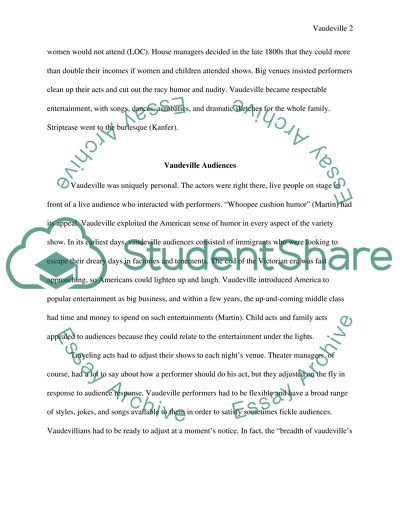Cite this document
(“Entertainment At Its Peak: Vaudeville Essay Example | Topics and Well Written Essays - 1750 words”, n.d.)
Entertainment At Its Peak: Vaudeville Essay Example | Topics and Well Written Essays - 1750 words. Retrieved from https://studentshare.org/performing-arts/1549177-entertainment-at-its-peak-vaudeville
Entertainment At Its Peak: Vaudeville Essay Example | Topics and Well Written Essays - 1750 words. Retrieved from https://studentshare.org/performing-arts/1549177-entertainment-at-its-peak-vaudeville
(Entertainment At Its Peak: Vaudeville Essay Example | Topics and Well Written Essays - 1750 Words)
Entertainment At Its Peak: Vaudeville Essay Example | Topics and Well Written Essays - 1750 Words. https://studentshare.org/performing-arts/1549177-entertainment-at-its-peak-vaudeville.
Entertainment At Its Peak: Vaudeville Essay Example | Topics and Well Written Essays - 1750 Words. https://studentshare.org/performing-arts/1549177-entertainment-at-its-peak-vaudeville.
“Entertainment At Its Peak: Vaudeville Essay Example | Topics and Well Written Essays - 1750 Words”, n.d. https://studentshare.org/performing-arts/1549177-entertainment-at-its-peak-vaudeville.


